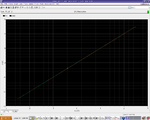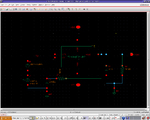nitishn5
Full Member level 6
- Joined
- Mar 27, 2011
- Messages
- 372
- Helped
- 92
- Reputation
- 186
- Reaction score
- 101
- Trophy points
- 1,323
- Location
- Bangalore, India, India
- Activity points
- 4,189
I have not used a MOS capacitor and don't know how it works and whether it needs any other bias, etc.
Bandwidth will drop with miller compensation. That is expected. One option is increasing the tail current in the first stage. This gives higher gm for the input pair and pushes out the UGB. Also add the series resistance like I have said before as this will improve phase margin. with these two handles you can optimize for better BW.
Bandwidth will drop with miller compensation. That is expected. One option is increasing the tail current in the first stage. This gives higher gm for the input pair and pushes out the UGB. Also add the series resistance like I have said before as this will improve phase margin. with these two handles you can optimize for better BW.

